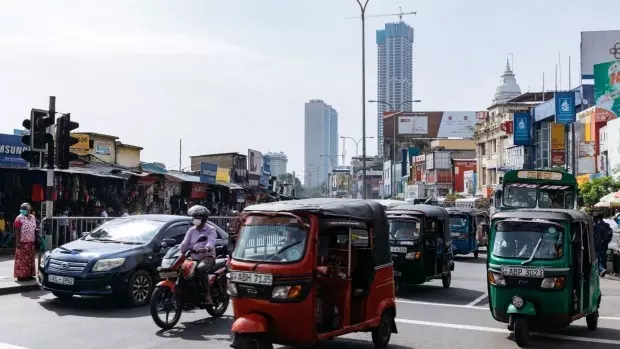Colombo March 7 2023: China has given assurances that it will support Sri Lanka’s debt restructuring, potentially clearing the biggest hurdle for the South Asian nation to secure a $2.9 billion bailout from the International Monetary Fund in the coming weeks, reported by Bloomberg.
Sri Lanka expects the IMF board approval in three to four weeks after its largest bilateral creditor gave written support for the debt restructuring via the Export-Import Bank of China on March 6, President Ranil Wickremesinghe told the parliament on Tuesday. Authorities signed the letter of intent for the IMF loan Monday, he said.
Sri Lanka’s rupee jumped 4% against the dollar while stocks rose 2% after Bloomberg News reported China has given its assurances. The bankrupt nation expects fresh funds from the Asian Development Bank and the World Bank after the IMF loan, the president said.
China’s backing completes the support Sri Lanka needs from creditor nations for the IMF board to approve the loan that was agreed upon by the Fund staff in September. The bailout talks dragged on for months as Beijing demanded that multilateral institutions such as the World Bank be part of any restructuring for debtor countries, raising tensions with the US.
Some optimism arose in February as the Group of 20 nations aligned on the language on debt after their meetings. Since then, Beijing has extended a $2 billion loan to Pakistan while Premier Li Keqiang told IMF Managing Director Kristalina Georgieva last week that China is open to participating in multilateral efforts to help heavily-indebted nations “in a constructive manner.”
The bailout will pave the way for more funding for Sri Lanka and set the bankrupt nation’s debt restructuring on a steadier path since last year’s default. The positive development may bode well for Zambia and Ghana whose debt relief talks have also been slowed by disagreement of the world’s two superpowers on debt issues.
China has become the world’s largest government creditor to developing countries over the last decade, giving it a key role in talks over debt restructuring. Most of that lending has been done by state-owned banks, which can be reluctant to write-down loans, as it can impact the promotion prospects of bank executives.
While paralyzing supply shortages in Sri Lanka have eased, foreign currency reserves have been inching up and inflation somewhat cooling, the nation needs the IMF loan to get more funding and turn the corner. The government anticipated the board’s nod by the end of 2022 although it has since adjusted expectations to within this quarter.
IMF financial support can only be provided for countries with sustainable debt. For those whose debt is classified as unsustainable, the Fund’s financing may proceed before a restructuring is completed if official bilateral creditors provide the IMF with adequate assurances that they will take steps to help restore debt sustainability.
On Monday, US Treasury Secretary Janet Yellen expressed support for Sri Lanka’s steps toward clinching an IMF program in her conversation with President Wickremesinghe. Yellen welcomed Sri Lanka’s “commitments to transparency and comparable treatment for all bilateral official and private creditors,” according to a readout.
In the past months, Sri Lanka has increased taxes, cut energy subsidies and loosened its grip on the currency to secure the IMF loan. The central bank recently boosted borrowing costs further to ensure that inflation which has slowed from nearly 70% doesn’t flare up.
India and the Paris Club of creditors have previously given their support to Sri Lanka’s debt restructuring that has dragged since Sri Lanka defaulted in May last year.
Chinese lending to Sri Lanka accounted for almost 20% of Sri Lanka’s public foreign debt in May 2022, according research by the School of Advanced International Studies at Johns Hopkins University, while the World Bank and Asia Development Bank held 10% and 15% shares respectively. Japan held 8%.
The troubled economy seeks to turn the corner after the bailout, expecting inflation to ease to single-digit levels by the end of 2023 as tourism and remittances pick up.










